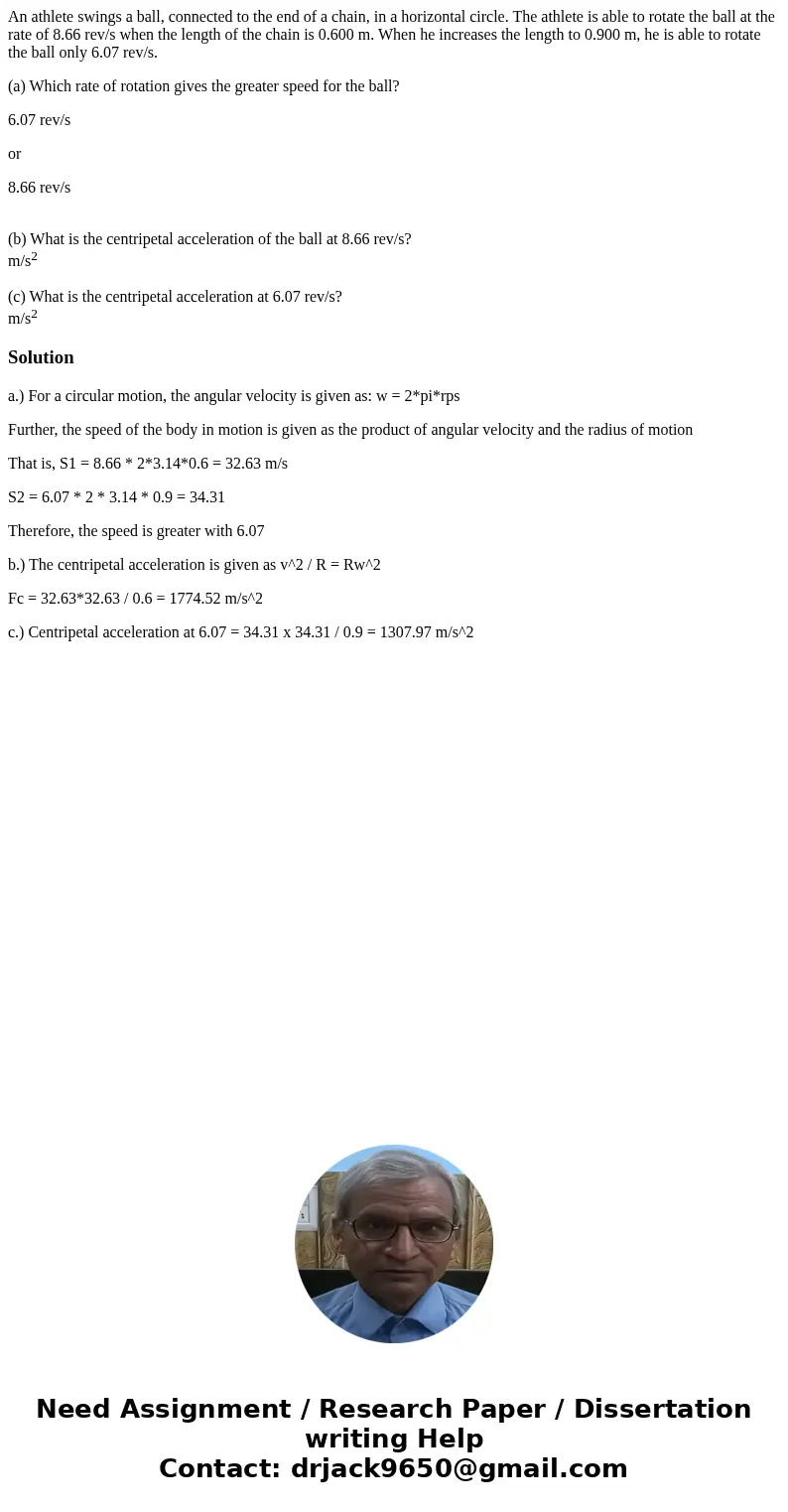An athlete swings a ball connected to the end of a chain in
An athlete swings a ball, connected to the end of a chain, in a horizontal circle. The athlete is able to rotate the ball at the rate of 8.66 rev/s when the length of the chain is 0.600 m. When he increases the length to 0.900 m, he is able to rotate the ball only 6.07 rev/s.
(a) Which rate of rotation gives the greater speed for the ball?
6.07 rev/s
or
8.66 rev/s
(b) What is the centripetal acceleration of the ball at 8.66 rev/s?
m/s2
(c) What is the centripetal acceleration at 6.07 rev/s?
m/s2
Solution
a.) For a circular motion, the angular velocity is given as: w = 2*pi*rps
Further, the speed of the body in motion is given as the product of angular velocity and the radius of motion
That is, S1 = 8.66 * 2*3.14*0.6 = 32.63 m/s
S2 = 6.07 * 2 * 3.14 * 0.9 = 34.31
Therefore, the speed is greater with 6.07
b.) The centripetal acceleration is given as v^2 / R = Rw^2
Fc = 32.63*32.63 / 0.6 = 1774.52 m/s^2
c.) Centripetal acceleration at 6.07 = 34.31 x 34.31 / 0.9 = 1307.97 m/s^2

 Homework Sourse
Homework Sourse